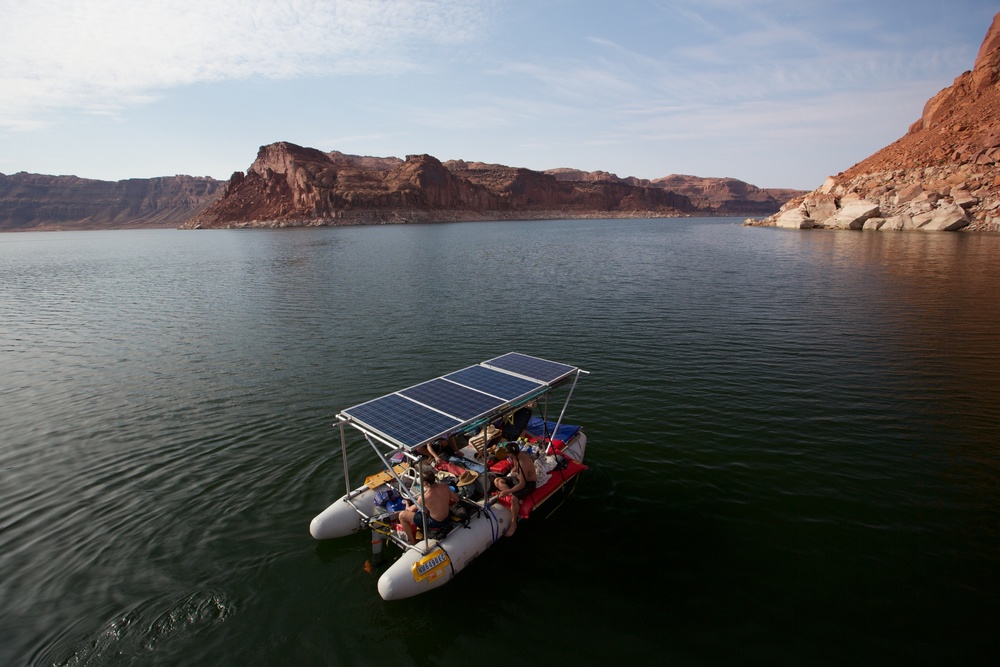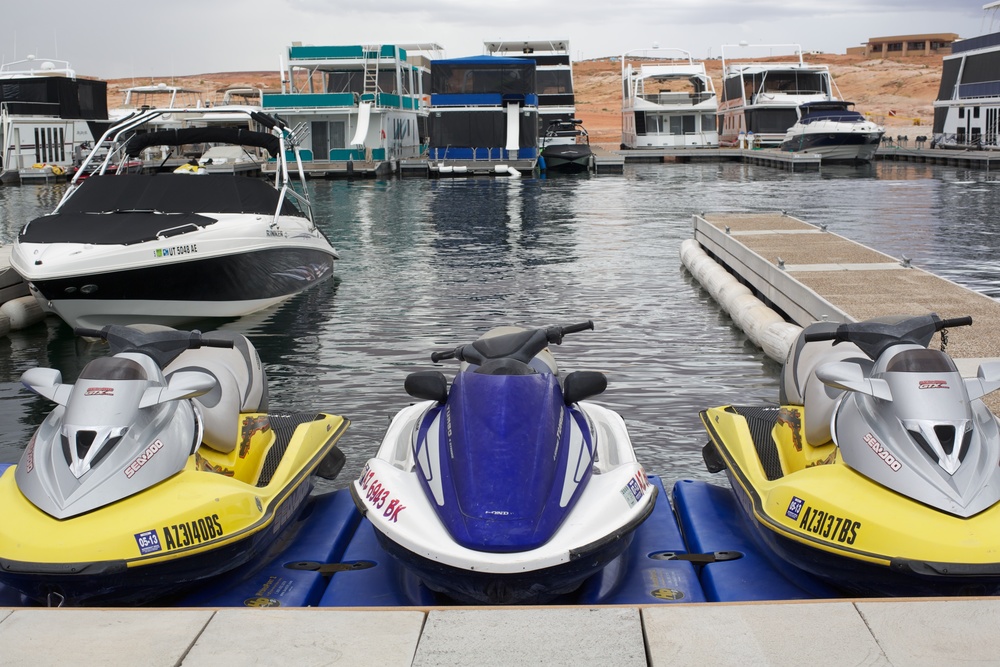
We decided to do things on Powell a little differently than the average visitor. Thanks to the innovative folks at Jack's Plastic Welding, we got that chance. The Jack's Plastic 22 foot long solar powered raft took us 160 miles in 6 days from Hite, Utah, to Glen Canyon Dam without a single drop of fuel.
First, a bit of background. Glen Canyon Dam was proposed in the 1950's and completed in 1966. Powell briefly reached full pool in 1980 and has steadily declined ever since. The reservoir drowned Glen Canyon, one of the Colorado's most celebrated canyons in the eyes of early explorers. John Wesley Powell remarked upon the canyon saying, "we have a curious ensemble of wonderful features - carved walls, royal arches, glens, alcove gulches, mounds, and monuments. From which of these features shall we select a name? We decide to call it Glen Canyon." Beyond the tragic environmental consequences of the Dam, its societal purpose remains unclear. Is there any reason for the dam? The surrounding area, virtually devoid of population, does not require a reservoir of this size for drinking water purposes. The dam is simply a delivery system. The 1922 Colorado River Compact arbitrarily placed the boundary between upper and lower basin states at Lees Ferry, 15 miles downstream from Glen Canyon Dam. The upper basin states, therefore, simply built the dam in order to store water for delivery to the lower basin. What if the boundary was 300 odd miles downstream? In that case, Lake Mead (which remains at 50% capacity) could easily fulfill this same purpose without drowning Glen Canyon. As it is, the only true affect of Lake Powell is to provide added surface area for evaporation. An average of 860,000 acre feet of water evaporate from the reservoir each year, accounting for 6-8% of the Colorado River's flow.

We began our solar powered journey at the Hite Marina in Utah. The Marina is essentially a ghost town. Years of drought have left the original boat ramp hundreds of feet away from the water and only small boats can now launch at the small, muddy ramp that remains. Beginning early in the morning, we rigged up the solar raft and got under way. The Jack's Plastic Welding Solar Boat is outfitted with 4 solar panels. We cruised at 3-4mph most of the time and fit 5 people relatively comfortably. As we made our way downstream, we saw several of the first tell tale signs that the environment was changing. The river's silt quickly disappeared. By the first evening we were cruising through unnaturally clear blue waters. Just as striking, we quickly took notice of the "bath tub ring." The lake is 60 feet lower than its maximum and is marked by a ring of white stained rock on the once orange walls, showing how high the waters used to reach. Despite the awe inspiring beauty around us, these marks of degradation reminded us constantly that something is terribly wrong.

We continued on. Day after day of endlessly beautiful red walls marred by the bathtub ring and the unnatural water color. Soon, however, a different aspect of Powell caught our eye. Hite may be a ghost town but the other marinas are not. As we approached Bullfrog Marina and Hall's Crossing. We began to see two story houseboats, three story house boats, jet skis, speed boats, and even floating restrooms. Other visitors to the lake whizzed by us. The wakes from their 60mp+ speeds rocked our boat violently as we plodded along at 3mph. The lake has brought 3 million visitors a year to experience the unnatural beauty of a desert sea.

One of the difficult things about crossing Lake Powell is that it is beautiful. I want to hate it. I hated the dam and the lake for years before I actually visited. In the end, I come away torn. The brief affection that I had for the beauty that remains has, in the end, only made me long more for the beauty that must have been. That such a degraded place can still retain such beauty and can pass silently into oblivion, still adored by 3 million visitors a year... it is even more a tragedy. Against all these hard facts, however, the Lake remains one of the most visually beautiful places I have visited in the West.
Despite this, I still come away from the reservoir crossing with hope. The fact that we can cross Powell in a solar powered boat proves that things can be done a different way, a way that isn't typically conceived of. Even though this is a small scale achievement, hopefully someday the communities of the Southwest can collectively expand on this kind of lesson in order to view the dam and the reservoir in a different light.



